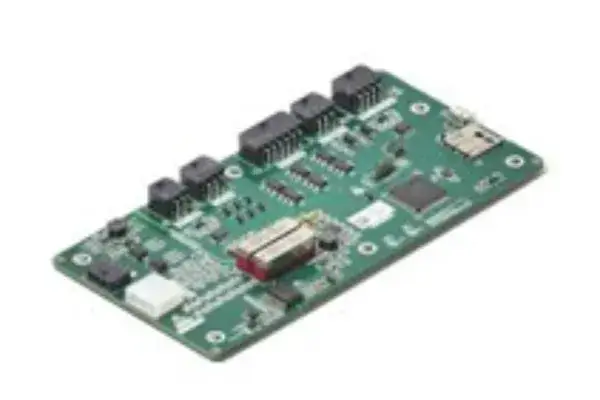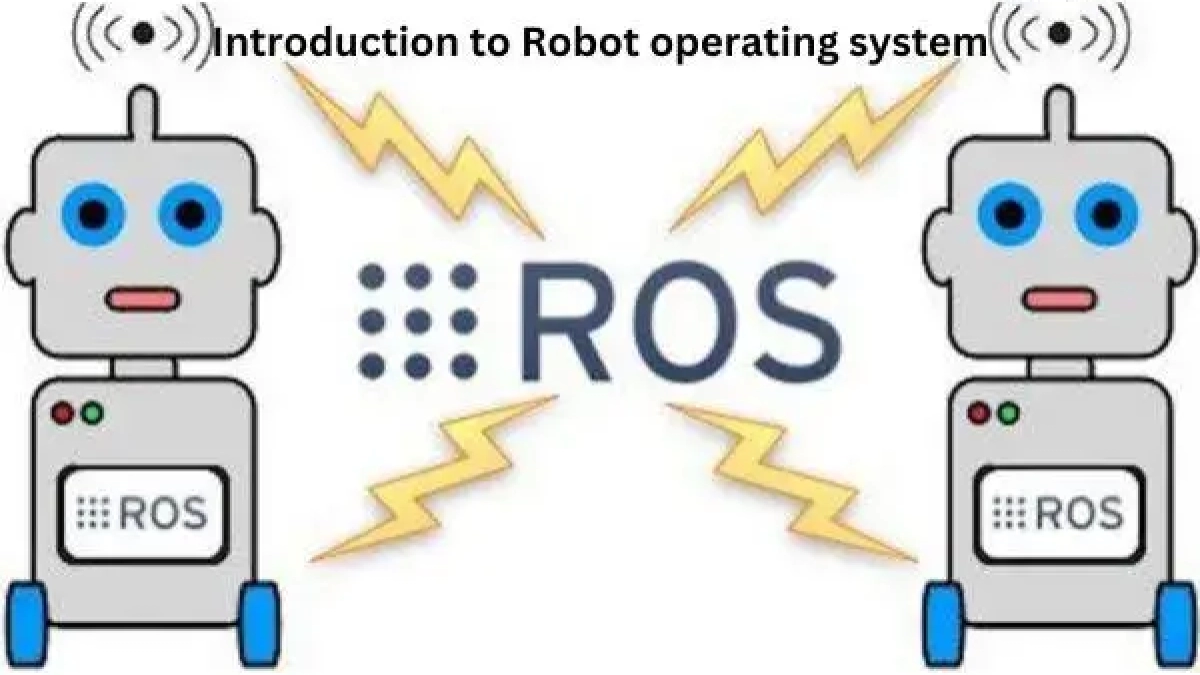Introduction
The open-source middleware system known as the Robot Operating System, or ROS for short, is used to create robotic software. It offers a collection of tools and frameworks that make it easier to create sophisticated and reliable robot applications. Open Robotics is currently responsible for maintaining ROS, which was first created by Willow Garage, a robotics research group.
Key features of ROS include:
- Middleware Communication: ROS enables communication between various robotic system components. It facilitates information flow between nodes (separate software processes) using a publish/subscribe messaging system. In order to coordinate different operations inside a robotic system, communication is essential.
- Package Management: Resources such as libraries, executables, configuration files, and other files are arranged into packages by ROS. This modular design streamlines the development process and encourages code reuse.
- Hardware Abstraction: ROS gives programmers the ability to build code that is not dependent on the particular hardware platform by providing hardware abstraction. The creation of scalable and portable robotic applications is made possible by this abstraction layer.
- Device Drivers: ROS comes with a number of device drivers for different robotic platforms, actuators, and sensors. The incorporation of additional devices into a robotic system is made easier by this pre-built support for standard hardware components.

- Tools for Visualization: Robotic system monitoring, debugging, and visualization are all included in ROS. Tools that assist developers in comprehending and troubleshooting the behavior of their robots include the simulator Gazebo, the RQT graphical user interface, and the 3D visualization tool RViz.
- Community Support: The lively and engaged community of ROS is one of its strongest points. Around the world, developers build and share packages, guides, and best practices as part of the ROS ecosystem. This cooperative setting encourages creativity and speeds up the creation of robotic applications.
- Flexibility & Extensibility: ROS is made to be both extendable and adaptable, enabling developers to alter and expand its features to suit their own requirements. Because of its adaptability, ROS may be used for a variety of robotic applications, ranging from commercial goods to research prototypes.
- Programming Languages Supported: C++, Python, and Lisp are just a few of the languages that ROS supports. Because of this flexibility, developers can utilize their most familiar language for different parts of their robotic applications.
Benefits of Robot operating system
Numerous advantages provided by the Robot Operating System (ROS) contribute to its acceptance and popularity in the robotics industry. The following are some main benefits of using ROS:
- Community-driven and Open Source: ROS is an open-source framework, which permits unrestricted modification and redistribution of its source code. Within the international robotics community, ROS’s open nature encourages cooperation and knowledge exchange. Developers all over the world support its development, creating a rich ecosystem of resources, libraries, and packages.
- Modularity and Reusability: The architecture of ROS is modular, with robotic software arranged into packages. Because of its modular design, which encourages code reuse, developers can more easily utilize pre-existing components to create new robotic applications. This quickens the development process and raises the software’s general quality.
- Middleware for Communication: ROS offers a communication middleware that facilitates easy communication between various robotic system components. By using a publish/subscribe approach, this middleware facilitates easy information sharing between nodes. The coordination of several sensors, actuators, and algorithms within a robot is contingent upon this communication method.
- Hardware Abstraction: ROS enables developers to write code that is not dependent on the particular hardware platform by abstracting the hardware layer. By offering a standardized interface for dealing with sensors, actuators, and other hardware components, this abstraction streamlines the development process. Additionally, it improves portability, which facilitates the adaptation of robotic software to various hardware setups.

- Rich Set of Tools: ROS provides many tools that make Robot Development, Debugging, and Monitoring easier. Developers better understand robot behavior because visualization tools like RViz, debugging tools like RQT, and simulators like Gazebo facilitate the analysis and optimization of applications.
- Device Drivers: For typical sensors and actuators, ROS comes with a large selection of pre-built device drivers. Developers can save time and effort by using this collection of drivers to make the integration of new hardware into robotic systems simpler.
- Scalability: Because of its scalable nature, developers can use ROS for a variety of robotic applications, ranging from small-scale research prototypes to massive industrial robots. Because ROS is modular and versatile, developers can expand their applications according to the requirements and complexity of the robotic system.
- Support for Several Programming Languages: C++, Python, and Lisp are just a few of the languages that ROS supports. This language flexibility enables the integration of existing codebases written in many languages and accommodates developers with varying language preferences.
- Simulation Capabilities: Before implementing ROS on real robots, developers can test and validate their robotic algorithms in a simulated environment thanks to its good integration with simulators such as Gazebo. Simulation decreases error risk and can also expedite development.
- Educational Resource: ROS is a great educational tool that lets hobbyists, researchers, and students learn about and work with robotics. Both novice and seasoned developers can use ROS because of its wealth of tutorials, documentation, and friendly community.
Drawbacks of Robot operating system
The Robot Operating System (ROS) has many benefits, but users may also run across some issues and problems with it. When thinking about using ROS for a specific robotic application, it’s critical to be aware of these constraints. The following are a few disadvantages of ROS:
- Learning Curve: For those new to robotics and software development, in particular, ROS has a steep learning curve. Users may require some time to become skilled in comprehending and utilizing the different components and concepts inside ROS due to the system’s overwhelming complexity.
- Resource-Intensive: ROS has the potential to be a resource-intensive program, using a large amount of RAM and computing power. Applications using limited resources, like lightweight robots or tiny embedded devices, may find this concerning.
- Performance in Real Time: The original architecture of ROS did not consider real-time applications. Despite recent improvements to real-time capabilities, ROS might not be appropriate for applications like high-speed control systems that demand incredibly low latency responses.
- Absence of Standardization: Although developers commonly utilize ROS, they do not strictly standardize it in some sectors. Different developers may implement similar functionality slightly differently, which could cause compatibility problems when they merge packages from multiple sources.
- Security Issues: Because ROS is an open-source framework, security issues could arise. When using ROS in environments where security is a major concern, like robotics applications in the medical or defense industries, users must exercise caution.
- Limited Industry Adoption: Although academia and research widely use ROS, some companies, especially those with safety-critical applications, may restrict its uptake. Industries with strict safety regulations could need more procedures for validation and verification.
- Not Suitable for All Robotic Systems: Not every kind of robotic system is a good fit for ROS. For instance, the full potential of ROS may not be greatly beneficial for specialized or simple robots with low processing requirements, adding needless complexity.
- Dependency Management: As the number of packages and their versions rises, it might be difficult to maintain dependencies across various ROS packages. Integration problems may arise from package version incompatibilities.
- Limited Real-world Deployment Tools: Although ROS offers great simulation tools such as Gazebo, there could be difficulties when moving from simulation to real-world deployment. It might be challenging to create sturdy, dependable robotic systems that function flawlessly in the real world.

- Continuous Evolution: The frequent release of new updates and versions of ROS may make it more difficult to sustain and maintain current robotic systems over the long run. There may be compatibility problems between various ROS versions.
Conclusion:
In conclusion, the Robot Operating System (ROS) stands as a powerful and versatile framework that has significantly contributed to the advancement of robotics research, development, and deployment. Its open-source nature, modular architecture, and extensive set of tools have propelled ROS into the forefront of the robotics community.
ROS has been instrumental in fostering collaboration and knowledge-sharing among developers, leading to a vibrant ecosystem of packages and libraries. The benefits of modularity and reusability have allowed for the creation of complex robotic systems with greater ease and efficiency. The middleware system enables smooth coordination of sensors, actuators, and algorithms in robots.
ROS offers benefits but has a steep learning curve and real-time limits, requiring careful project consideration.
ROS has democratized robotics, enabling innovation and collaboration. As technology evolves, it will likely remain central to robotics’ future. Its impact on education, research, and industry applications underscores its significance in the broader landscape of robotic systems development.


